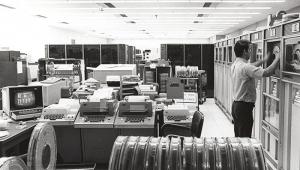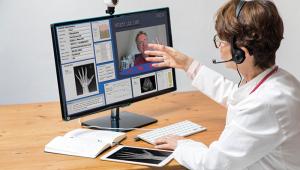
I recently got a quote for some flooring work from a local business. Five minutes after he left, I received an email with a quote he sent from his van before driving away. This included links that enabled me to accept the quote, pay a deposit and schedule the work.
The payment went straight into his accounting system and the bank automatically confirmed the cash had been paid. From his van he could authorise payments to his suppliers, record his mileage and claim his expenses, uploading copies of any receipts. Plus, after the work was completed, I received links to trade sites to provide feedback.
This contractor is not unusual – many small businesses now have more accounting functionality on their phones than most public sector bodies access through their multi-million-pound data centres.
Using cloud-based technologies, small, agile businesses are now able to compete with bigger organisations in much the same way that the internet enabled small local businesses to sell nationally and internationally.
This also means that the role of their accountants is changing. In the past, these small businesses would have collected receipts in a shoe box and used a high street accountant. Now software provides up-to date accounts and bank reconciliations, with forecast final accounts and tax calculations, all at far lower cost. The typical high street accountant will only survive if they add value beyond accounts production.
What do these developments mean for public sector bodies? Most have anticipated the move away from accounts production, with finance staff becoming business partners and advisers, and would rightly point out that their accounting is considerably more complex than the type of business described.
But, generally, they have been slow to exploit the opportunities for automation and self-service. Ultimately, the aim should be to move to ‘silent-running’ systems that minimise fuss and human input.
Accountants have a key role in helping their organisations to understand how technologies such as cloud computing, artificial intelligence and process automation can deliver those silent-running systems. They should also have an interest in how they can be deployed in areas beyond the finance function. Plus, they have an important part to play in helping to develop and sanity-check the business cases for investment; especially if their organisations are to live within future spending targets.
The LGA, for example, is forecasting a £7.8bn funding gap in council spending by 2025. This comes on top of confirmation by the National Audit Office of a 49% fall in council funding in real terms between 2010 and 2018.
The NHS and central government are forecasting equally dramatic funding gaps. Technology alone cannot bridge these, but it can help deliver systems to minimise costs and enable organisations to focus on delivering services.
Perhaps the biggest opportunities are in supporting a mobile workforce, especially in social care and healthcare.
If these systems can support hundreds of thousands of small businesses, perhaps it’s time to explore what they can do for the public sector?




















